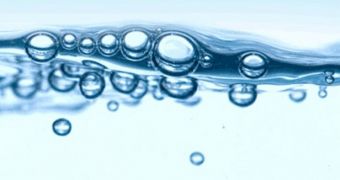Two separate teams at the Massachusetts Institute of Technology (MIT), in Cambridge, have developed a synthetic leaf each. The devices are capable of removing oxygen from water, a process similar to its natural counterpart from which researchers drew inspiration – photosynthesis.
Both devices are capable of using the power of the Sun to achieve oxygen separation, the teams say, and both are based on a catalyst developed three years ago by MIT professor Daniel Nocera.
The artificial leafs look like solar cells, but augmenting them with the catalyst is what allows them to separate hydrogen and oxygen in water. In order to work, the cells need to be submerged in water, and exposed to simple sunlight.
According to Nocera, the MIT Henry Dreyfus professor of energy, and professor of chemistry at the Institute, the next step in this work is to produce a large-scale, fully functional leaf replica.
When this is accomplished, he says, a new catalyst will be added to the mix. The chemical will be responsible for bubbling out the hydrogen in water as well. Such a device would allow H2 molecules to form, and then be harvested.
The current devices can produce oxygen molecules, but the dissociated hydrogen atoms are not coaxed into forming molecules. Rather they are converted into loose protons and electrons, which are of no use, and cannot be used practically.
By adding the second and final catalyst, the artificial leafs will become capable of producing both oxygen and hydrogen molecules. The latter could then be used to power fuel cells in electric vehicles, for rocket fuel production, or for generating plain, old electricity.
Details of the first device were published in the May 12 issue of the journal Energy & Environmental Science, while the second investigation was detailed in the June 6 issue of the esteemed journal Proceedings of the National Academy of Sciences (PNAS).
Nocera says that the versatility of the catalyst system was demonstrated by the fact that two different team managed to come up with different approaches of using it. He specifically gave the task to two different groups of experts, just to see what his colleagues would come up with.
“These papers are really important, to show that the catalyst works,” the expert says. He is extremely happy that the catalyst substance could be bounded to the silicon inside solar cells. These devices provided the backbone for the new systems.
The new leafs are “still a science project. We haven’t even gotten to what I would call an engineering design,” Nocera adds. He says that completed versions of the leafs could become available within three years, if all goes well.

 14 DAY TRIAL //
14 DAY TRIAL //